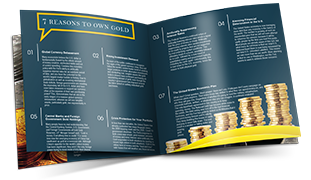
Gold’s potential rise to $5,000 is a “frankly conservative” estimate, according to Schroders’ Metals Fund Manager. James Luke recently outlined the investment firm’s optimistic forecast as gold starts behaving as a “monetary asset” while still exhibiting its traditional characteristics as a commodity.
This foundational change is promoted by a polarizing global economy amid the dollar’s confident crisis.
“A Global Gold Bid”
Schroder has long maintained the perspective that “global geopolitical and fiscal trends have the potential to drive a very powerful bull market in gold.”
Now, those powerful forces come in the form of an accelerating de-dollarization trend, unsustainable debt accumulation, and the rise of foreign currencies. Analysts suggest that Trump is simply supercharging those developments by attempting to eliminate trade deficits and throwing the dollar’s weight around.
Those powerful forces have a firm grasp on the gold market as the world order transitions from USD hegemony to multi-polarity, leading to a worldwide influx into the yellow metal. The inevitable result is a further boom.
“The gold market is simply not large enough to absorb such a simultaneous global bid without much higher prices.”
Stagflationary Risks Mount
Even amid recent rollbacks, concessions, and pauses, Trump’s aggressive economic restructuring (and its repercussions) remains ongoing.
“Trump’s protectionist agenda is cyclically stagflationary as a base case.”
Many experts believe these disruptive reforms threaten to usher in a dreaded stagflationary rut. With a negative Q1 GDP, the economy is already halfway to a recession.
At the same time, inflation remains sticky, forcing the Federal Reserve into a reactive position.
As the Schroders Economic Team points out, gold and other safe-haven assets tend to receive a boost from stagflation.
Currently, analysts paint a grim economic outlook, forecasting the tariff regime (only one side of a multifaceted economic transformation) to hike inflation by 2% and slash output by 1%.
Gold’s Rise as a “Monetary Asset”
Although gold prices are still influenced by supply and demand dynamics, the metal’s record-breaking rally has been fueled by more than commodity-related factors. In the past, it would rise primarily as a hedge against inflationary pressures as investors sought out safe havens amid temporary economic downturns.
Lately, gold is cementing its role as a central fixture of the global economy, reflected by sustained central bank demand and the metal’s recent classification as Tier 1 collateral.
As Schroder explains, “Gold is rallying as a monetary asset, not as a commodity asset.”
Another telltale sign of gold’s rising importance as a cornerstone in the worldwide financial system is its outperformance of other commodities. As the metal enters uncharted price territory, even above inflation-adjusted highs, other commodities struggle to post gains.
👉 Related Read: Gold Moves to Reclaim Its Throne in the Global Financial System
A $5,000 Bet
The lid is off gold, both technically and macroeconomically, as the yellow metal surges into unexplored areas. In plain terms, Schroder’s bullish outlook is as follows:
“Gold at $5,000/oz by the end of the decade did not feel like an outlandish scenario twelve months ago. It feels frankly conservative now.”
Despite standing 43% above the current all-time high, this price forecast finds good company along with growing calls for $5,000 gold in the medium to long-term.


